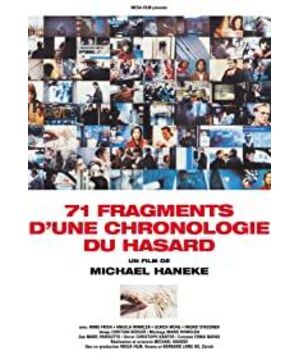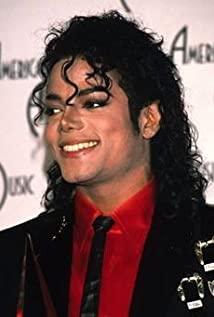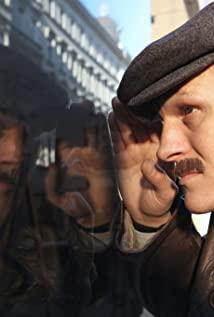Partial Seeing
In "71 Fragments of the Chronicle of Chance", Michael Haneke chose to use "violence" as a corner of his image glacier, in order to beat the audience, thus drawing out the idea that "the world is made of fragments". Reality.
People associated with a continuous event see different local information of the event due to the presence of different time and space, and then draw different judgments due to their different cognitive and emotional styles—this kind of "partial seeing" shattered the continuum of events and their realities.
In fact, "continuous events" are just human wishful thinking. We are accustomed to cutting off the unreachable beginning and ending of events with "a long time ago" and "since then" to outline a story. Only in this way can the story be told from beginning to end. End, whether it's a fairy tale, a detective story, or a news report.
In his childhood life, the absence of his father may be an important reason for Michael Haneke's understanding of the incompleteness and fragmentation of the world, and his own marriage is also repeating the fragmentation pattern[1]. Haneke is deeply disturbed and convinced of such a world, which is why films like "71 Fragments of the Chronicle of Chance" describe the fragmented world with fragmentary narratives: the entire film consists of the lives of people who do not know each other. Pieces are spliced together, and if it weren't for the shooting at the end, they might never have intersected.
And what the film focuses on describing is another deeper fragmentation: the lack of communication between people. Homeless teenagers cannot communicate with others because of language barriers, fathers and daughters cannot communicate due to cold life relations, middle-aged couples cannot communicate with their adopted children... Marco Milano and classmates, gas station drivers, banks, passers-by and others Even though he was on the phone with his mother, it seemed that he talked a lot happily, but not once was he expressing his real situation and troubles. "We talked endlessly, but there was no communication. The more intimate the communication, the worse the communication. The closer we are, the less we talk" [2].
The whole world is a Babylonian tower.
slack recovery
Through a movie, Haneke wants to recover not the ins and outs of the real case. He believes that "movies always pretend to depict the whole"[2] is suspicious, the omniscient perspective is divorced from reality from beginning to end, and art's restoration of reality, if only to meet the audience's need to understand events, may become a parody. In this sense, Haneke's 71 Fragments of the Chronicle of Chance goes deeper and closer to reality than Gus van Sant's The Elephant.
The film begins with a TV news image and ends with a repeated news image—Haneke dissatisfied with the pseudo-truth of the news report, in its gushing pseudo-communication (there is no communication between man and TV, through the language of television’s evanescent It is impossible to know the truth of what happened) to tear a rift in the language and insert a film to describe what he thinks the world really looks like.
Packing up current affairs of war, street shootings, Christmas customs, entertainment news (Michael Jackson's child molestation) and throwing it at viewers through a TV screen - Haneke resented the kitsch. He has better language to narrate, and he recognizes that the audience's own experience will inevitably lead to different ways of understanding, and honestly respects this reality, "leaving some fragments" and "giving the audience the possibility of expanding understanding".
He looks for and shows the more connections in events, the more clues, the better at piecing together reality. But restraint is needed here, to overcome the habit of "in the mainstream of cinema, we always pretend to know everything"[2], only limited and loose recovery materials can be provided, and the author cannot transcend reality and complete the only narrative. There should be enough space and white space for the audience. In this sense, Haneke's 71 Fragments of a Chronicle of Opportunity is cooler and more real than Guy Ritchie's Two Smoking Barrels—he rejects dangerous entertainment and drama.
shards, still shards
There's a long shot of ping pong at 23 minutes of the movie, and Haneke gives us 3 minutes to watch this trivial scene that pushes the boundaries of most viewers. For Marco Milan, his anger and outbursts are completed by these countless 3 minutes. 3 minutes will let us go through the complete process of "understand - interesting - bored - angry - calm - accept - understand", but only if you do not fast-forward from the middle to replace the subsequent experience opportunities. This long shot is an example of a real, simultaneous display of power. If you can accept it, there is also a fixed long shot (8 minutes) of answering the phone in the film that is worth repeating.
Yes, this shot is real, just real, not beautiful. Haneke believes that "painting or trying to paint beauty will immediately turn into a lie"[2]. He only shows the truth, and whether he can discover the beauty behind the truth is the subject of the audience.
Loneliness, isolation, disappointment, flight, anger, laughter, depression, absence, boredom... Every character is a fragment, and every moment of emotion is a fragment. What kind of life can be restored in these 71 fragments Chronicle - Has nothing to do with Haneke anymore, only about yourself.
[1] Michael Haneke's father left home when he was three years old, and he did not meet him until he was an adult. Michael Haneke has a child with his ex-wife and three stepsons from his second wife.
[2] From an interview with Haneke compiled by Goldfish J.
View more about 71 Fragments of a Chronology of Chance reviews











